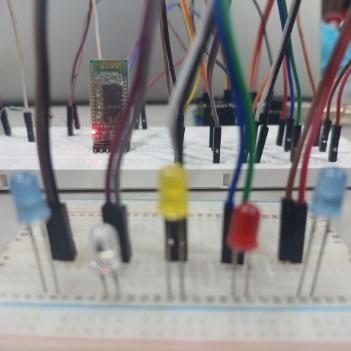Alertify
A smart alert system that transforms your home lighting into a visual notification system
Created on 15th March 2024
•
Alertify
A smart alert system that transforms your home lighting into a visual notification system
The problem Alertify solves
Deaf individuals often encounter difficulty in promptly receiving alerts and notifications due to their reliance on auditory senses necessitating a non-auditory solution for effective communication.
What is the problem?
Alert Systems are flawed by design. They rely heavily on sound based communication to alert users. Think about a ringing phone to alert you about an incoming call/message or someone pressing the doorbell of your home. This setup poses a big problem for those with impaired auditory senses - the deaf and hard-of-hearing individuals. Their inability to listen to such sounds makes them dependant on others around them to stay alerted.
Why is this a problem?
Notifications play a huge role in our lives. Every micro-interaction in our digital world helps keeps us connected to others in real time. Imagine relying on others to inform you whenever you receive a call on your phone or someone rings your doorbell. While some phones come equipped with small notification LEDs / Always-on-Display to alert the users visually, It is not a feasible solution in situations where you may not have your mobile phone in front of you. Alertify was developed to cover this gap.
How does it solves the problem?
The idea is to convert user's smart home lighting system into a visual-alert system. Now imagine you are getting a video-call on your phone and your room light turns to blue to inform you about the same? or yellow if someone rings your smart door-bell. While the possibilities are endless, alertify is the first step towards that direction and is currently in a prototype stage.
Advantage over existing solutions?
- Accessibility - Your smart-watch / smart-phones can only notify a single user per device, a smart bulb changing colors can notify more than 1 people at the same time.
- Easy Setup - It integrates well with your existing lighting solutions without spoiling the aesthetics of your room.
Challenges we ran into
Technical Challenges
While developing the prototype the biggest hurdle was to transmit data from the mobile apk to arduino UNO board. Due to the memory limitations of arduino UNO board and the bandwidth limitations arising from using bluetooth as the mode of communication, we need to preprocess the data on the client's device only. post the pre-processing, the data was encoded to numeric format to simplify the processing part of the arduino board. Having worked with REST APIs earlier, it was a bit challenging to reduce the transmission as much as possible,
Integration Challenges
Many different brands have smart bulbs in the market. However, Most of them offer zero developer access and their devices have to be controlled from their apks only. This move kills innovation because of the challenges in reverse engineering devices from different brands. Due to this we could not use any existing brand's bulb and had to develop our own prototype using LEDs and arduino board. Considering the above challenge, we also proposed the creation of an unified network for controlling all the smart device using a single app. This will give a boost to user's innovation and help identify hidden usecases.
Technologies used
